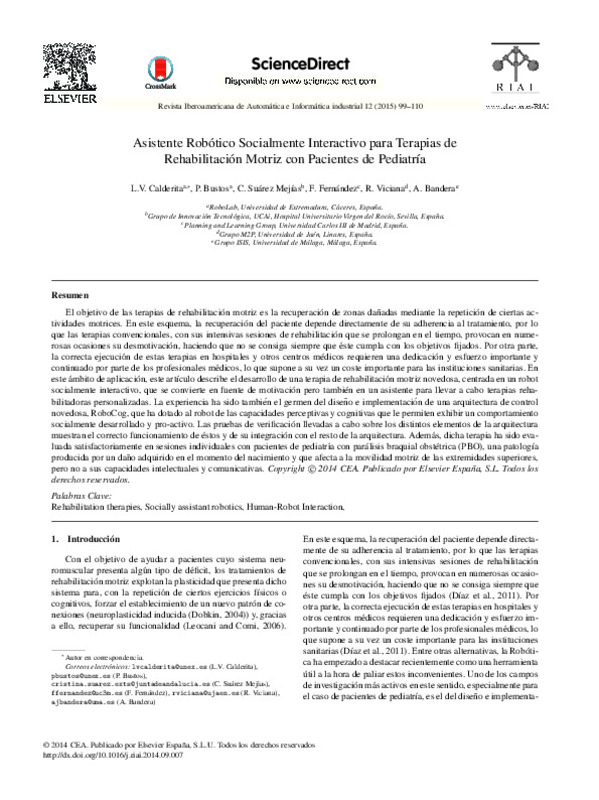JavaScript is disabled for your browser. Some features of this site may not work without it.
Buscar en RiuNet
Listar
Mi cuenta
Estadísticas
Ayuda RiuNet
Admin. UPV
Asistente Robótico Socialmente Interactivo para Terapias de Rehabilitación Motriz con Pacientes de Pediatría
Mostrar el registro completo del ítem
Calderita, L.; Bustos, P.; Suárez Mejías, C.; Fernández, F.; Viciana, R.; Bandera, A. (2015). Asistente Robótico Socialmente Interactivo para Terapias de Rehabilitación Motriz con Pacientes de Pediatría. Revista Iberoamericana de Automática e Informática industrial. 12(1):99-110. https://doi.org/10.1016/j.riai.2014.09.007
Por favor, use este identificador para citar o enlazar este ítem: http://hdl.handle.net/10251/143824
Ficheros en el ítem
Metadatos del ítem
| Título: | Asistente Robótico Socialmente Interactivo para Terapias de Rehabilitación Motriz con Pacientes de Pediatría | |
| Otro titulo: |
|
|
| Autor: | Calderita, L.V. Bustos, P. Suárez Mejías, C. Fernández, F. Viciana, R. Bandera, A. | |
| Fecha difusión: |
|
|
| Resumen: |
[ES] El objetivo de las terapias de rehabilitación motriz es la recuperación de zonas dañadas mediante la repetición de ciertas actividades motrices. En este esquema, la recuperación del paciente depende directamente de ...[+]
[EN] Motor rehabilitation therapy pursuits the recovery of damaged areas from the repetitive practice of certain motor activities. The patient's recovery directly depends on the adherence to rehabilitation therapy. ...[+]
|
|
| Palabras clave: |
|
|
| Derechos de uso: | Reconocimiento - No comercial - Sin obra derivada (by-nc-nd) | |
| Fuente: |
|
|
| DOI: |
|
|
| Editorial: |
|
|
| Versión del editor: | https://doi.org/10.1016/j.riai.2014.09.007 | |
| Código del Proyecto: |
|
|
| Agradecimientos: |
Este trabajo ha sido realizado parcialmente gracias al apoyo del Ministerio de EconomÍa y Competitividad (MINECO) y fondos FEDER bajo el proyecto coordinado TIN2012-38079,
en el que participan las Universidades de ...[+]
|
|
| Tipo: |
|








